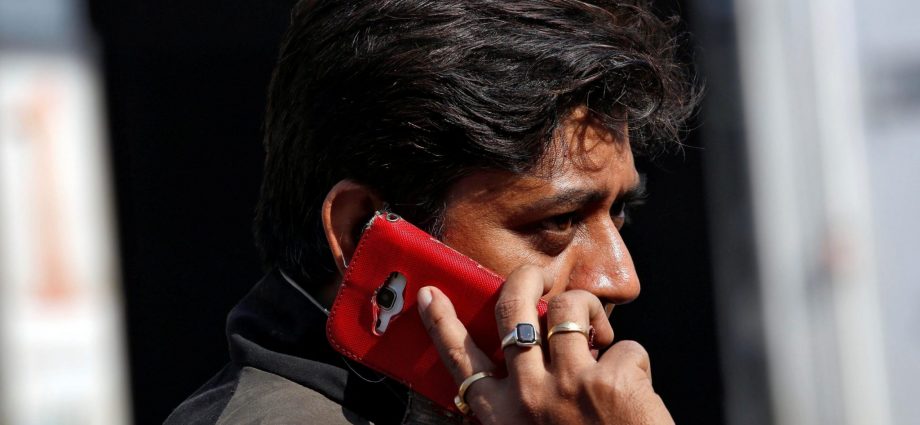JAIPUR – India will likely soon restrict Chinese smartphone makers from selling products in lower-tier local markets, a move that will aim to prop and protect competing Indian manufacturers while applying more regulatory pressure on big Chinese producers like Xiaomi Corp, OPPO and Vivo.
The move, which is not yet formally announced but reported in Bloomberg and local news outlets quoting anonymous sources, will aim to oust Chinese smartphone brands such as Transsion and Realme from the 12,000 rupee (US$150) or cheaper segments of the market, currently the world’s second-biggest.
Those Chinese brands have recently seized market share from local producers such as Micromax, Lava and Karbonn, which were dominant in lower-tier markets just a few years ago but have more recently lost significant market share to Chinese cheap brands.
The anticipated new market restrictions will coincide with ongoing tax evasion investigations into OPPO, Vivo and Xiaomi, including for allegedly failing to pay full import duties on parts and components used to make phones sold on Indian markets.
The protectionist move, once implemented, promises to complicate broad bilateral trade relations at a time of surging growth. China-India trade is on course to cross the $100 billion mark for a second consecutive year, with trade up $67.1 billion in the first half of this year, Chinese state media reports.
The Chinese Communist Party-run Global Times notes that out of 382 foreign direct investment (FDI) proposals received by the Indian government from Chinese firms as of June this year, India approved only 80. It said that low number underlines “the increasingly difficult business environment facing Chinese investment and companies doing business in India.”
Ajay Sharma, a smartphone industry veteran with over 15 years of experience in the market, told Asia Times that the move aims to support increasingly down-and-out Indian smartphone brands.
“If this [government move] is indeed true, it would come as a big blow to brands like Transsion, Realme and Xiaomi, which rely heavily on India for their growth,” he said.

He said 12,000 rupee and below smartphones represented 33% of total local market sales volume in this year’s second quarter, of which Chinese companies took 80% of the market share.
Sharma said the government would need to be delicate with how it announces the new restrictions. “There is no official communication on this as of now and how will it get conveyed is a big question,” he said.
“Will it die out like the news in October 2021 of the replacement of Chinese distributors of select Chinese brands with Indian distributors?” he asked.
If not, China could be boxed out of a massive growth market. According to Maximize Market Research, which provides syndicate as well as custom-made business and market analysis, the total Indian smartphone market was estimated at 173 million units in 2020.
It estimates total revenue is expected to grow at a compound annual growth rate (CAGR) of 14 % from 2021 to 2027, with the market reaching 432.89 million units per year in 2027.
Counterpoint, a global industry analysis firm, estimates that India’s smartphone market revenues crossed $38 billion in 2021 while recording 27% year-on-year growth.
Faisal Kawoosa, founder and chief analyst, Techarc, a new age technology market research firm, believed that the sub 12,000 rupee and especially sub 6,000 rupee segment is shrinking year on year.
Kawoosa said it is still one of the most critical market segments with over 200 million people and most first time buyers in the country purchasing in this price range.
“It will not be in the interests of customers who are just sitting at the threshold of smartphones if the supply is restricted or hindered in any kind,” he said, referring to the anticipated new restrictions on Chinese phone makers.
The participation of non-local brands is equally as important as the local brands as it keeps the market competitive and prices aggressive, Kawoosa said.
He noted “our local brands are dependent on Chinese suppliers for components. If we restrict Chinese smartphone makers from this segment, it could be counterproductive for the local brands as well as they could face an unfriendly supply chain.”
Market insiders say local mobile manufacturers recently held closed-door meetings on the issue of restricting Chinese brands in New Delhi.
India-based wire agency IANS reported that the Indian government has recently taken a harsh stance against Chinese manufacturers, seen in recent raids on Chinese smartphone companies like OPPO, Vivo and Xiaomi on tax and other issues.
The IANS report said that OPPO, Xiaomi and Vivo were all served notices by the Directorate of Revenue Intelligence (DRI) for import duty evasion, citing Finance Minister Nirmala Sitharaman’s statement in parliament last week.

“A show-cause notice been served to OPPO Mobiles India Ltd based on an investigation conducted by the DRI, while five cases of customs duty evasion have been registered against Xiaomi Technology India,” Sitharaman said in a written statement.
These moves have not gone down well in Beijing. The Global Times suggested in a recent commentary that a crackdown on Chinese firms would undercut India’s broad attractiveness to foreign investment.
The report said, “Frequent investigations by the Indian side into Chinese enterprises not only disrupt those companies’ normal business activities but also impede the improvement of the business environment in India and chills the confidence and willingness of market entities, especially Chinese enterprises to invest and operate in India.”
India-China ties hit a new nadir after lethal border clashes in the Galwan Valley along their contested Himalayan border in June 2020.
Netizens soon thereafter launched a #BoycottChineseProducts campaign that trended strongly online. Prime Minister Narendra Modi’s government later banned more than 260 Chinese apps and platforms, including the popular TikTok, Shien and CamScanner.

